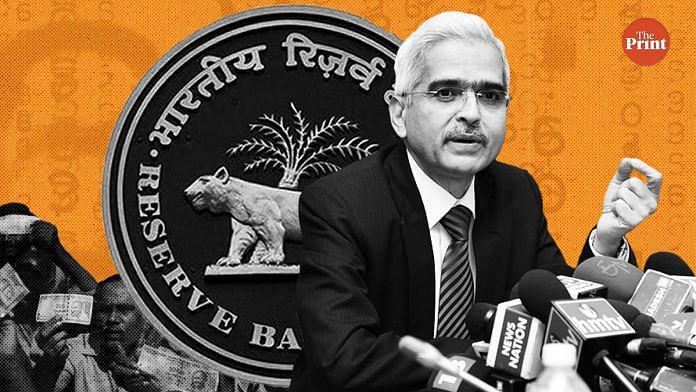Mumbai: Sometime in the middle of March, when the coronavirus pandemic was raging through several European countries and the United States, officials sitting at the new central office building of the Reserve Bank of India (RBI) in south Mumbai took stock.
The pandemic was in its initial stages in India and practices like social distancing and the use of sanitisers were yet to fully enter our daily lexicon. But the officials probably saw what was coming, though at that stage no one, except some statistical models, thought that infections would cross the 2-million mark in the country in the next five months, with over 60,000 daily cases being reported currently.
The top officials in the central bank decided to act. “Governor (Shaktikanta Das) was very keen that we should look at the possibility of activating the business continuity plan. We already started maintaining social distancing within the RBI… Sanitisers were used whenever we went out,” a top central bank official told The Print.
The issue at hand was to ensure that the payments system does not come to a standstill, to ensure funds flowed, salaries were credited and payments were made.
So on 19 March, one week before the country went into lockdown, the Reserve Bank of India activated its business continuity plan. As part of the plan, one of its data centres — located in the Kharghar area of Navi Mumbai — was identified to ensure financial transactions continue seamlessly.
“Typically disaster management is aimed at tackling situations like flood or earthquake. But this was completely different,” said a senior official who is overseeing the operations. “In a flood or earthquake-like situation, the priority is restoring the services. Here, priority was to ensure officials handling the critical functions are not infected so the functions can go on smoothly.”
Also read: RBI turns cautious amid inflation, keeps interest rate unchanged at 4%
Isolation in a hotel
To run the critical functions, it wasn’t just RBI officers who were picked for isolation but vendors as well. A hotel in the vicinity of the primary data centre was hired exclusively for all of them to stay. Around 70 support staff of the hotel such as maintenance, security and kitchen personnel, among others, were also isolated within the hotel.
All the residents of the hotel were asked to be prepared for the separation, while being assured that one can leave the group in case of any family or other emergency. Delivery of all supplies to the hotel in a safe manner was ensured and was regularly monitored. Transportation was hired on a dedicated basis while ensuring hygiene.
The two other data centres of RBI, one in Belapur in Navi Mumbai and another in Nagpur, have been acting as a backup to Kharghar since 19 March and officers handling critical operations are on standby at these backup centres.
The highest priority of the regulator was to ensure safety, health and social distancing. Precautionary measures like frequent sanitisation of common touch points, work space, infrared thermal scanning for all at entry, no visitors, awareness initiatives, were implemented. Coordination with government, municipal and police authorities, hospitals, doctors was also activated.
Data centre handling all important functions
During the last four and a half months, the important functions of the central bank, such as foreign exchange market and money market operations, the government’s borrowing programme, tax collection, clearing operations of banks are being operated from the primary centre. Before the pandemic, these operations were carried out from different RBI offices.
“The Reserve Bank of India (RBI) is perhaps the only central bank in the world to have set up a special quarantine facility with its officers, staff and service providers, numbering about 200, for critical operations to ensure business continuity in banking and financial market operations and payment systems,” RBI Governor Shaktikanta Das said while announcing the review of the monetary policy last Thursday.
This is for the first time that the critical functions were run from the data centre, and it continues until date.
“Initially we thought that arrangement would be required only for a month or two. But now it is almost five months. So there is fatigue,” another senior official of the central bank said. “So once in a while we allow some people to go home and another batch of people join. It looks like it will be for the long haul.”
So what is the way ahead?
Given that there are certain other functions also, apart from the critical ones, which need attention, the official said several measures are being discussed.
“Since it is a long haul, we have to go to the non-critical operations also and pay due attention. We may need more people to be isolated, probably hire another hotel. The development work also needs to take place,” the official said, adding these are the options which are being discussed but a decision has not been taken yet.
Also read: Allow us to restructure loans but no need for blanket recast, banks tell RBI







Please extend the moratorium upto November, because till date no business. How to pay the personal loan EMIs. Could please extend.